In the hillside of Nicula village, at about 7 km from the city of Gherla, was developed a monastery which was to become one of the most important monastic centres of Transylvania.
The year of 1699 is marked by a miraculous phenomenon: the icon of Virgin Mary, painted by the priest Luca from Iclod weeped between the 15th of February and 12th of March 1699. Currently, 15th august of each year is the date of the largest pilgrimage in Transylvania, with the celebration of the Assumption, patron of the monastery.
In Nicula monastery area an iconographic center of painting on glass develops, technique imported from Austria, Bohemia and Bavaria. But the difference between the icons of Nicula School and those from Western Europe consists of specific stylistic elements related to the fact that most authors were anonymous craftsmen coming from rural areas, and as a theme is approached almost exclusively the religious theme.
The first documentary record indicates the existence of a wooden churche in Maramures style, dedicated to the “Holy Trinity” which was destroyed by a fire in 1973, being replaced with a wooden church of the 17th century.
The first church of wall is erected between 1875-1879-1905, a large building with two spires above the narthex. The iconostasis which has in its centre a miracle-making icon of the Virgin Mary is carved in lime.
Currently, besides the wooden church and the stone church was built a monumental church in Brancoveanu style and an architerctural ensemble designed to become a center of patristic studies and creative workshop for continuing the tradition of the glass painting school of Nicula.
Nicula Monastery has a museum endowed with a rich collection of glass icons of Nicula, Fagaras, Schei of Brasov and with wooden icons from Maramures and Somes dating from the 16th and 17th centuries. Also, the museum holds a collection of religious books, sculptures in wood and roots, ceramics, fabrics, towels.



 back previous page
back previous page

 what's nearby
what's nearby city info
city info

